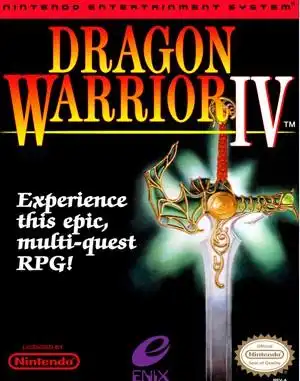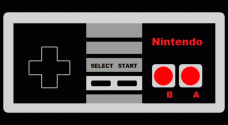The late 1980s and early 1990s were a golden age for RPGs on the Nintendo Entertainment System, but few titles dared to break the mold quite like Dragon Warrior IV. Released in North America in 1992, this final installment on the 8-bit console wasn't just another monster-slaying epic; it was a narrative experiment that felt surprisingly fresh, even back then.
While many classic RPGs started you directly on the hero's journey, Dragon Warrior IV took a different path, letting you get to know the world and its inhabitants before the legendary hero even shows up. This unique structure is a big part of why it remains such a beloved classic among retro gaming enthusiasts.
Why Dragon Warrior IV Stands Out: The Chapter Approach
Instead of a single sprawling quest, Dragon Warrior IV unfolds across five distinct chapters. The first four act as origin stories, each focusing on a different character who will eventually join the hero's party. This was revolutionary at the time and gave the supporting cast a depth rarely seen in 8-bit RPGs.
- Chapter 1: Ragnar McRyan - A burly soldier on a mission to find missing children. A classic hero setup that eases you into the mechanics.
- Chapter 2: Princess Alena - A feisty princess yearning for adventure, accompanied by her loyal companions, Borya and Kiryl. Her quest involves breaking free (literally!) and testing her strength.
- Chapter 3: Torneko Taloon - A humble merchant with big dreams. This chapter is a delightful departure, focusing on business, item collection, and building wealth rather than combat.
- Chapter 4: Maya and Meena - Two sisters, a dancer and a fortuneteller, seeking revenge for their father's death. Their journey is steeped in mystery and performance.
This episodic structure made the world feel larger and the eventual meeting of the party members feel truly significant. You weren't just recruiting generic units; you were bringing together individuals whose struggles and triumphs you had personally experienced.
Gameplay Innovations and Quirks
Beyond the narrative structure, Dragon Warrior IV introduced several features that became staples or notable points of discussion:
- The Wagon System: Once you acquire the wagon, you can travel with up to eight party members, swapping the four active members in and out during battle. This added a layer of strategy, allowing you to bring in specific characters for certain situations.
- AI "Tactics": In the final chapter (and remakes), you could set basic strategies for your party members, who would then act automatically. While the NES AI could sometimes make questionable decisions (like wasting MP!), it was an early attempt at automating combat and freeing the player to focus on the Hero or overall strategy, especially in boss fights. Remakes thankfully added manual control options.
- Casinos and Mini Medals: The introduction of casinos offered a fun distraction and a way to earn powerful items through gambling. Small Medals, collectible items found throughout the world, could be traded for unique gear, encouraging exploration.
- More Convenient Saving: Saving at a House of Healing was a welcome change from only being able to save with the king, making the adventure feel slightly less punishing for players short on time.
Torneko's chapter, in particular, stands out as a unique experiment. Spending a significant portion of an RPG managing a shop and collecting items was unusual and memorable, showcasing the game's willingness to play with genre conventions.
The Journey Culminates
The fifth chapter brings everything together. You finally take control of the Legendary Hero (or Heroine), whose village is tragically attacked. Your quest becomes gathering the characters you've come to know from the previous chapters to confront a rising evil force led by the formidable Psaro the Manslayer.
The final act involves classic RPG tropes – collecting powerful artifacts, navigating dangerous lands, and facing off against increasingly difficult foes. The synthesis of the individual stories into one grand quest is the payoff for the unique opening structure.
Experiencing DWIV Today
While the original NES version holds a special place in many hearts (despite its sometimes-criticized AI and translation quirks), Dragon Warrior IV has seen life on other platforms:
- Nintendo DS Remake (Chapters of the Chosen): A fantastic modern update with 3D graphics, added content (including a bonus chapter), and the crucial addition of manual control for all party members (though the original Western release controversially removed the "party talk" feature).
- Mobile Ports (iOS/Android): Based on the DS remake, these versions offer a convenient way to play on the go, often restoring features missing from the Western DS release like party chat.
These remakes offer a smoother, more accessible experience while retaining the core story and characters that made the original special.
Legacy of the Chosen
Dragon Warrior IV wasn't just a great game; it was influential. Torneko's merchant quest directly inspired the Torneko no Daibouken series, which in turn became the progenitor of the hugely successful Mystery Dungeon roguelike franchise. Characters from the game, like Ragnar, Alena, Torneko, Maya, Meena, Kiryl, and Psaro, have appeared in numerous subsequent Dragon Quest titles and spin-offs, solidifying their place in the series' history.
Whether you first played it huddled around a CRT screen with your NES or discovered it years later on a handheld, Dragon Warrior IV remains a landmark title. Its bold narrative structure, memorable cast, and blend of classic RPG mechanics with innovative ideas make it a must-play for any fan of retro JRPGs. It truly earned its reputation as one of the best RPGs on the Nintendo Entertainment System.
Frequently Asked Questions
Q: Why is it called Dragon Warrior IV and not Dragon Quest IV? A: Enix America changed the name of the series to "Dragon Warrior" for its North American releases on the NES due to a trademark conflict with the tabletop RPG DragonQuest. The series reverted to the "Dragon Quest" name in North America starting with Dragon Quest VIII on the PlayStation 2.
Q: Is the AI in the NES version really that bad? A: While the AI "Tactics" were innovative, they could be frustrating at times, with characters sometimes wasting MP or using abilities inefficiently. It wasn't terrible for basic combat, but boss fights often required careful management of the Hero's actions. Remakes added manual control, addressing this common criticism.
Q: Which version should I play? A: For the most authentic, nostalgic experience, the NES version is the original. However, the Nintendo DS or Mobile versions offer significant quality-of-life improvements, updated graphics, and extra content, making them excellent choices for a modern playthrough.
Q: What's unique about Torneko's chapter? A: Torneko's chapter is almost a mini-simulation game within the RPG. Instead of focusing primarily on combat and leveling, you spend time buying low, selling high, clearing out dungeons to find items, and managing funds to achieve his dream of owning a shop and digging a tunnel. It's a refreshing break from standard RPG progression.


